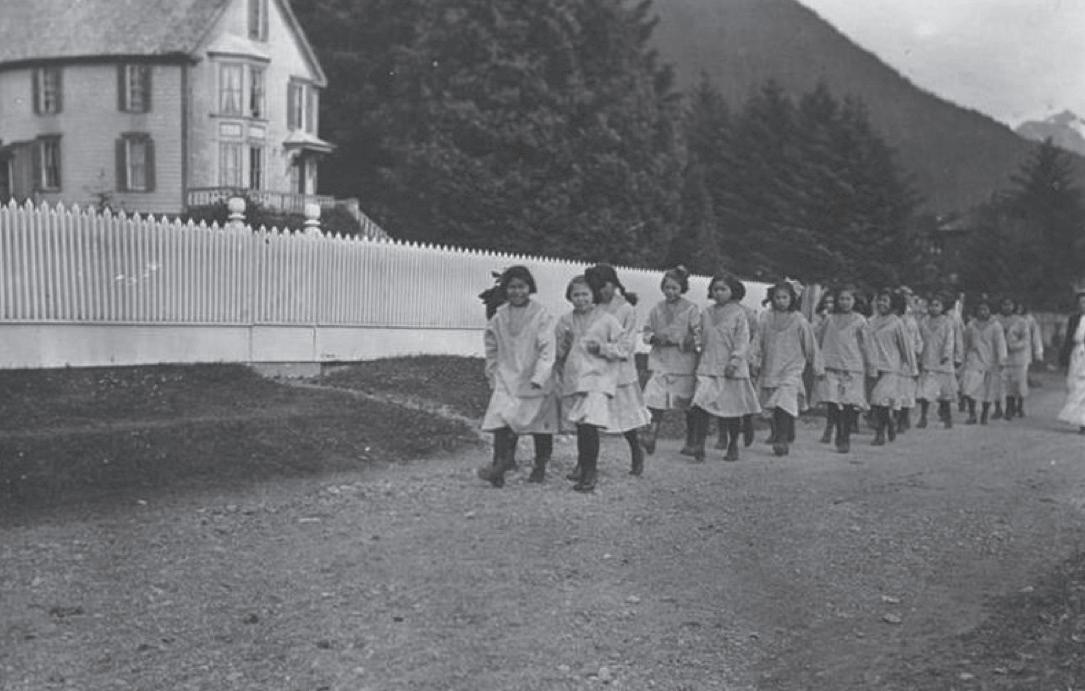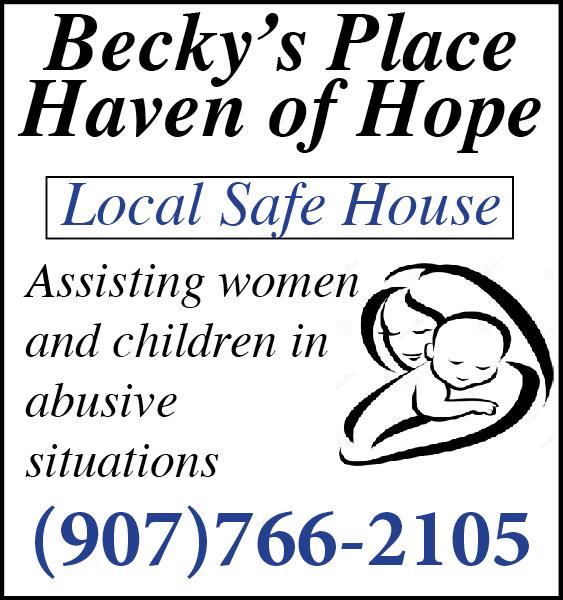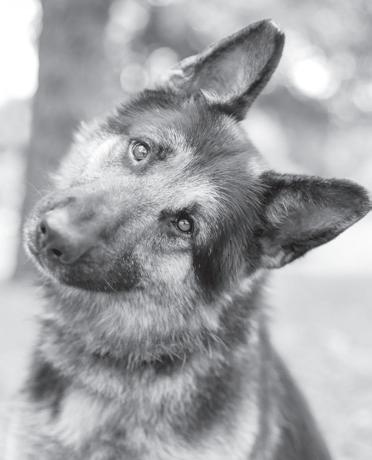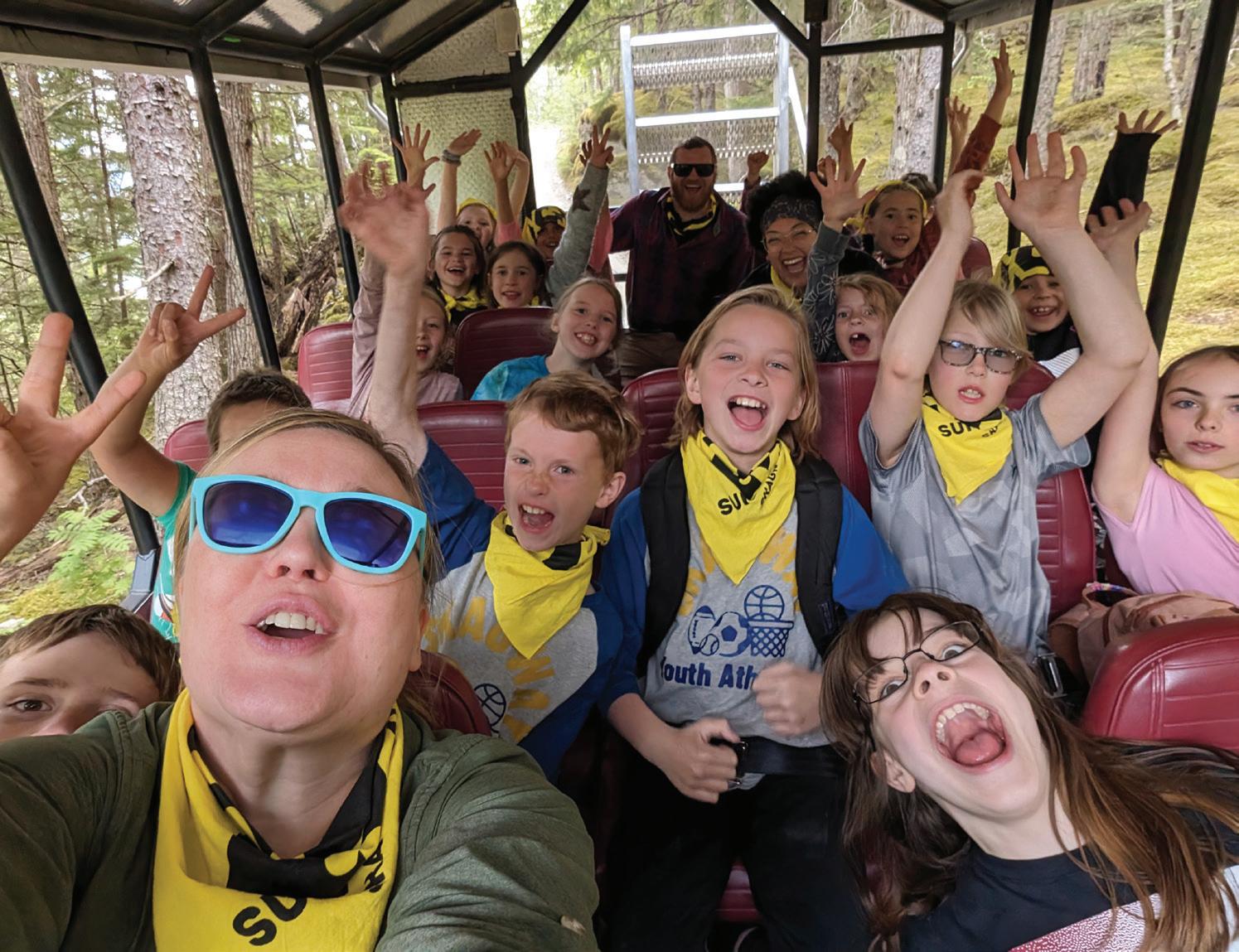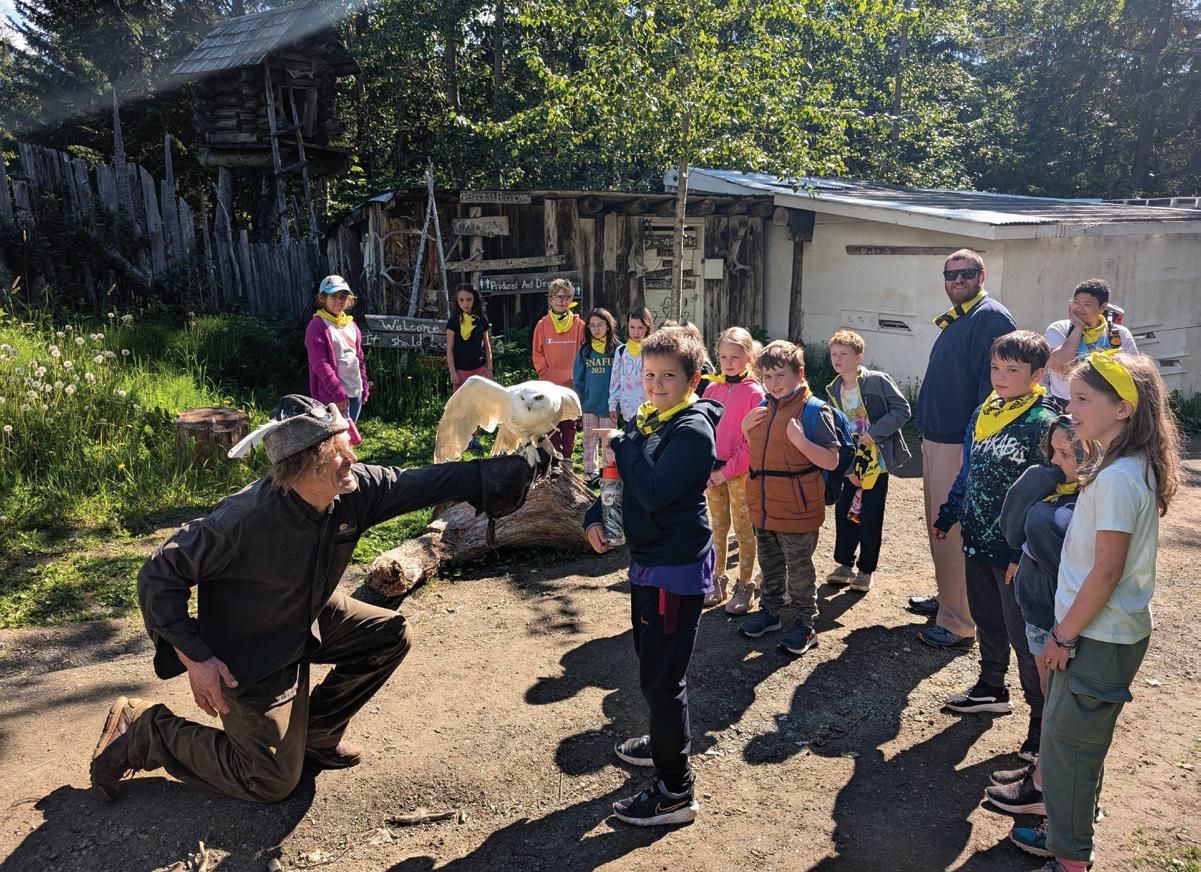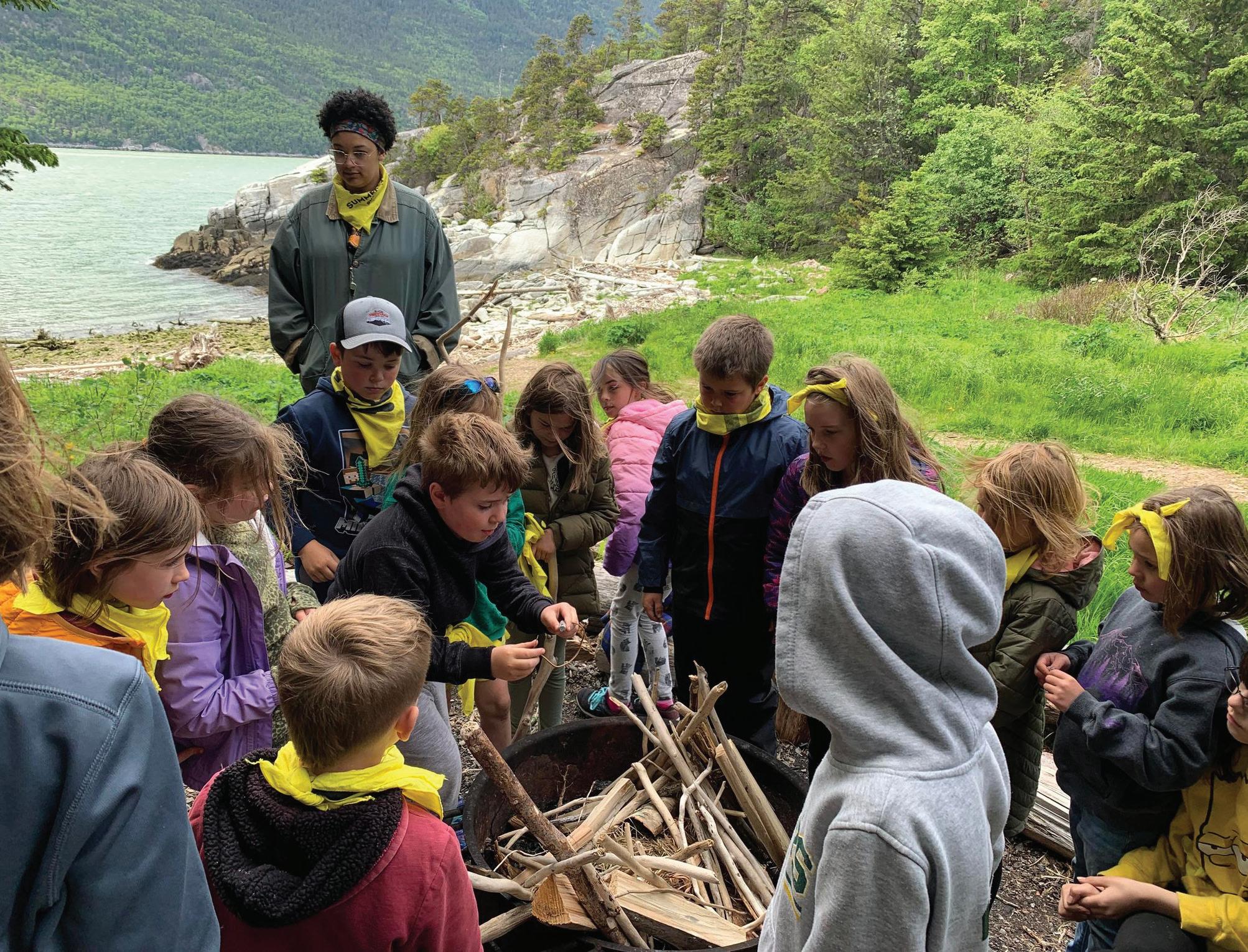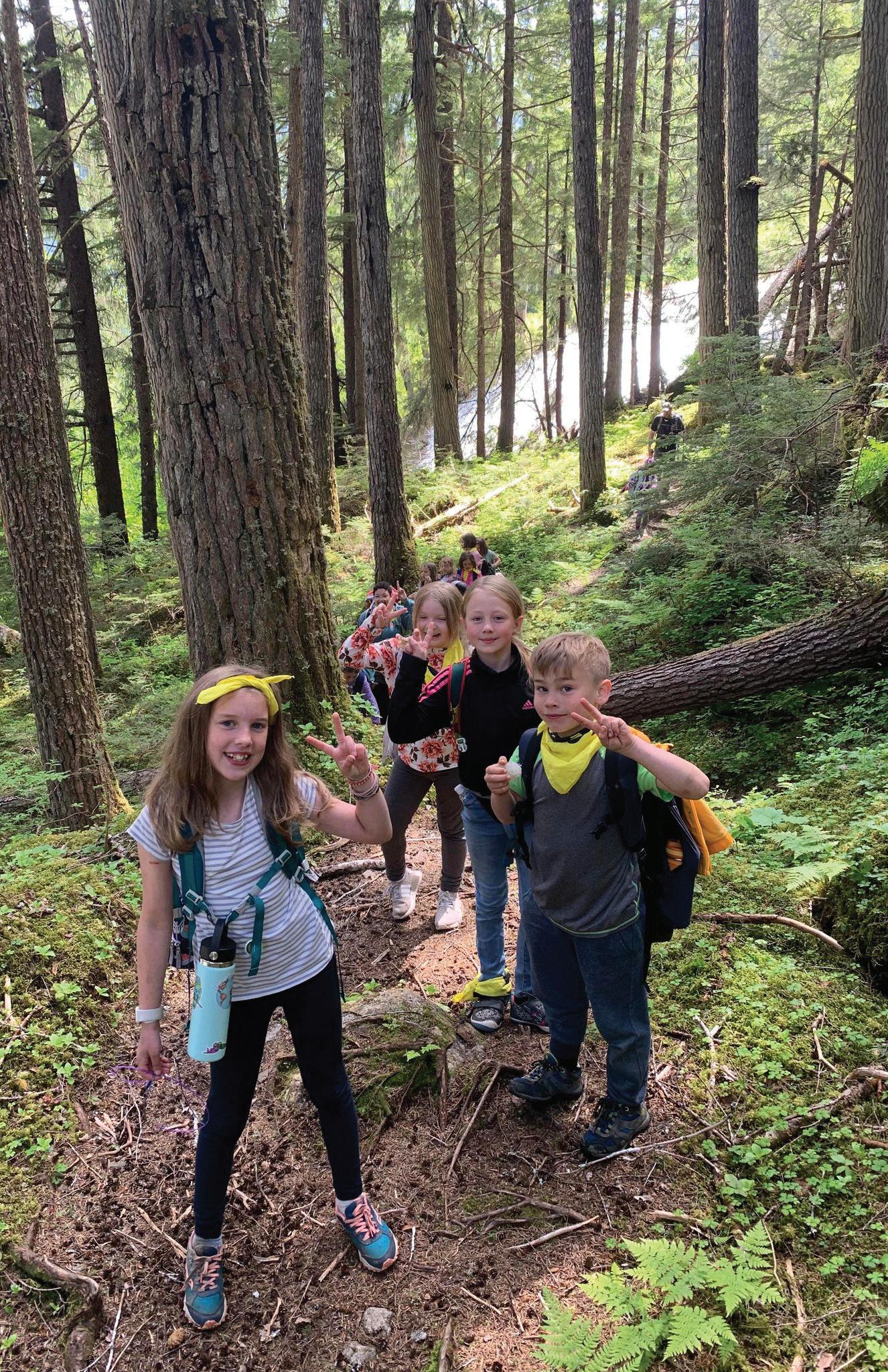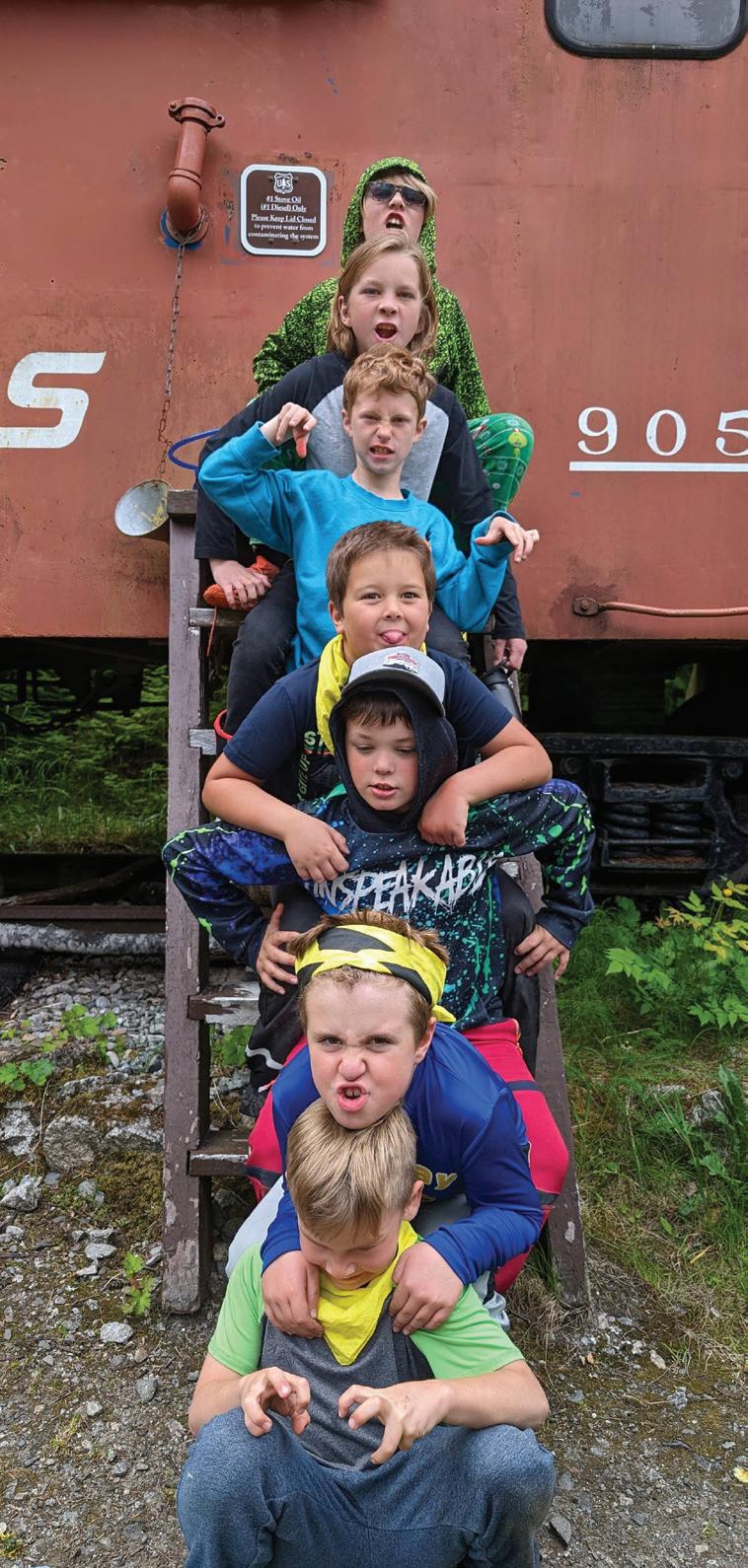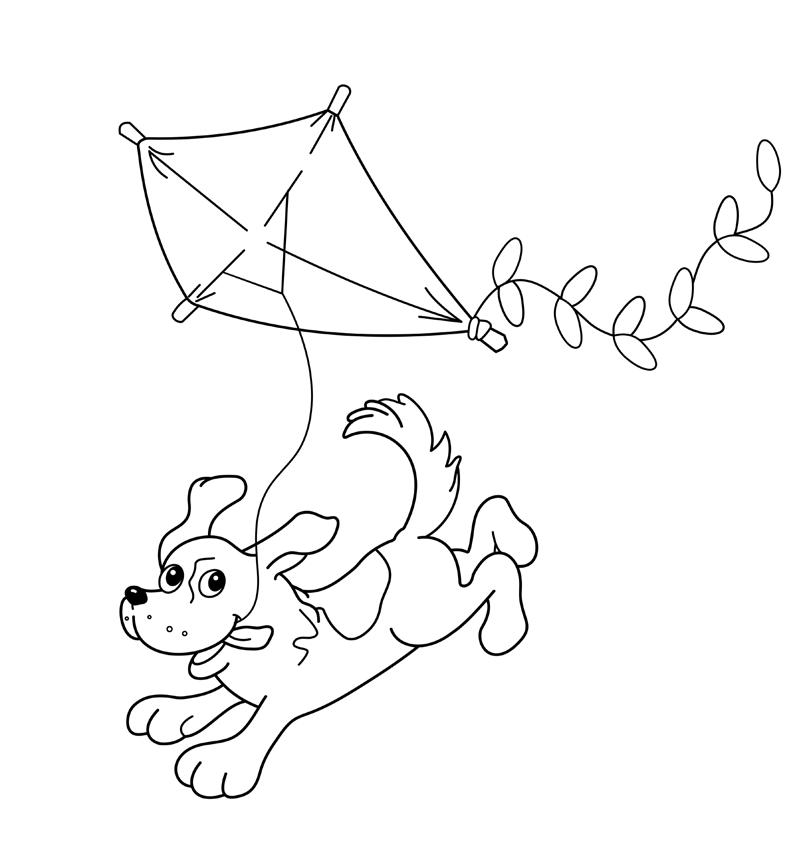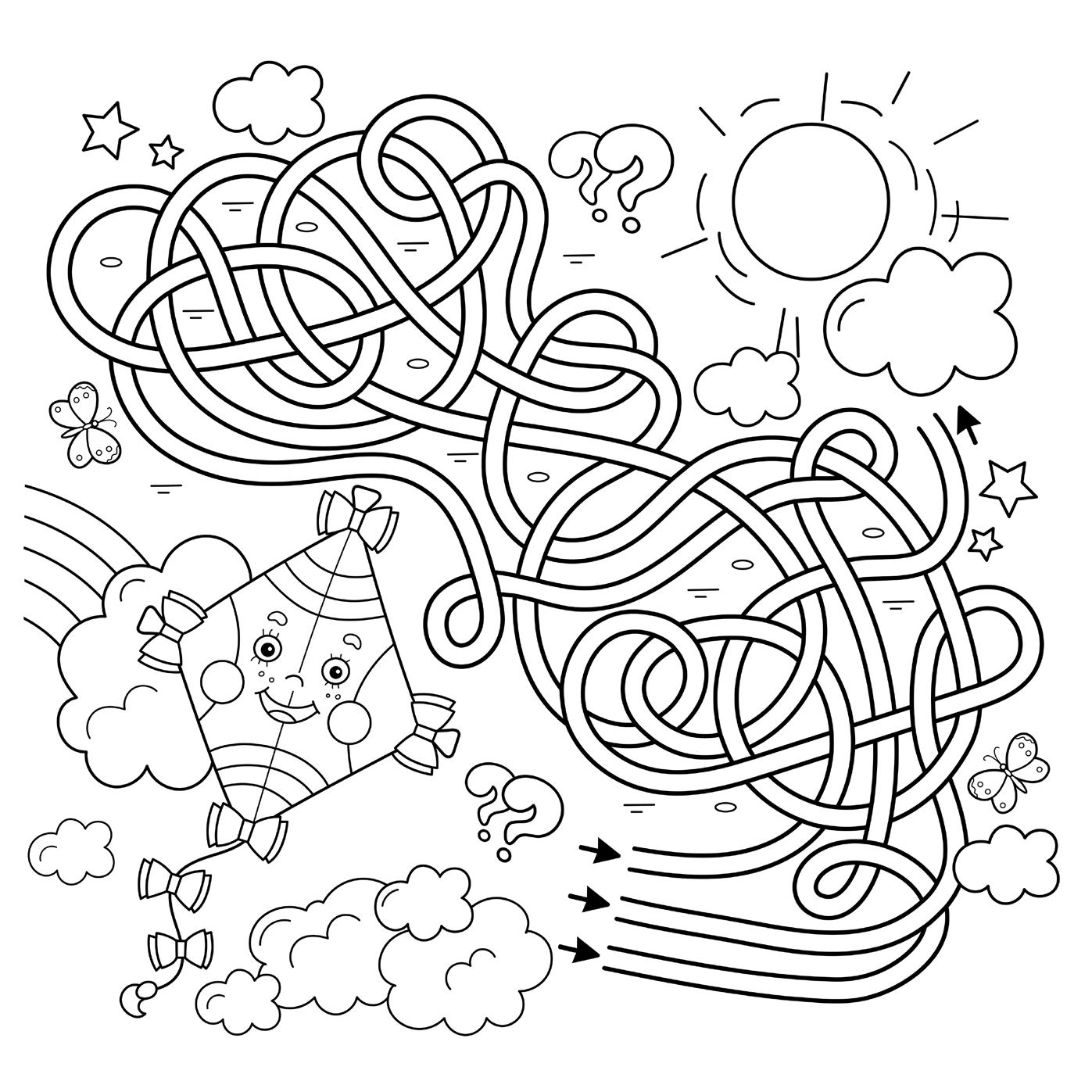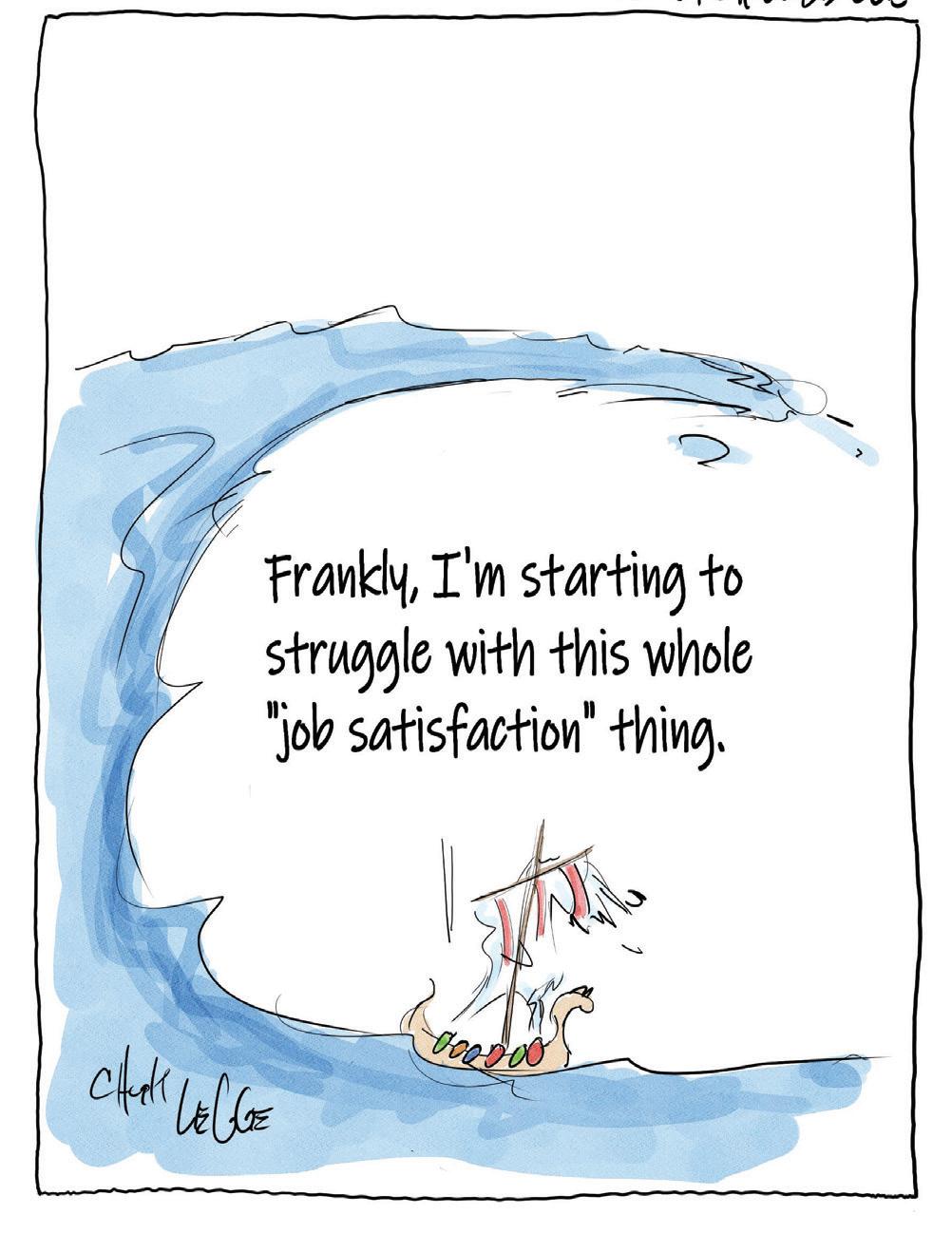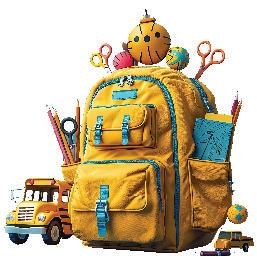State of Alaska election information
The Skagway News will publish election information each issue as we near the Oct. 1 municipal and the Nov. 5 general election. In both the state senate and house races for Skagway, the incumbants are running unopposed. Both candidates completed the questionaire provide to the by the Alaska Beacon. Their answers will be published here.
The state primary election is scheduled for August 20 where the top four vote getters in each race will advance to the general election.
State Senate District B
Juneau, Haines, Skagway, Gustavus
Jesse Kiehl - Democrat - Incumbant
Running unopposed
Education: What do you think should be done to improve public education in the state?
Alaska schools need three things to thrive: funding, pensions, and community support. The one-time funding the governor approved this year is not enough to cover the ravages of inflation, and because schools can’t rely on it next year, they’re forced to waste time and resources hedging their bets against future cuts.
With adequate, stable funding, they’ll be free to focus 100% on teaching and learning. Restoring defined benefit pensions for teachers, paras, and the folks who keep our schools running will bring back a stable, experienced workforce we’re lacking today. That will make a big difference.
Finally, all of us need to get involved in Alaska’s future. Schools need individuals and businesses to volunteer and mentor and help make education relevant. I teach outdoor skills to middle schoolers. Others help struggling elementary kids become better readers. There are lawyers and business owners who have high schoolers shadow them on the job. When the whole community is involved in our schools, education is relevant and everyone gives it the value it needs for kids to buckle down and succeed. And when they do, we all benefit.
Fish industry: What, if any, change would you make to state law to support the fishing industry and Alaskans who are dependent on fish harvests?
Conservation of the resource must come first. We need to get the Department of Fish & Game the tools to understand and manage fish runs as well as they once did. That includes the research dollars to identify why so many smolt die in the first weeks after they hit salt water. There’s little question that climate change and ocean acidification both play a role here. While those problems are bigger than Alaska can fix on our own, there’s a whole lot more we can add to do our part.
We also need to support our fishing families. I was proud to partner with the administration to temporarily loosen rules for some state loans that will help Alaskans paying off their boats and permits to ride out the current crisis. I look forward to working with the fisheries task force this summer to come up with more ideas to support the largest private-sector employer in the state: our commercial fishing industry.
Permanent Fund dividend: How should the state set the amount of the Permanent Fund dividend each year?
We should change the law to a formula Alaska can afford. Then we should follow that law. The 40+ year-old formula we have now was written when the Fund was in bonds and money markets. It’s badly out of date for today’s investments in private equity, real estate, and venture capital. Alaskans deserve a PFD we can count on.
A formula that splits the sustainable five percent of market value draw between dividends and public spending— on schools, public safety, ferries, and other essential services—would be a smart approach.
Energy: What should be done to address the pending energy crunch along the Railbelt?
The mix of answers starts with the electrical transmission bill we passed this year. It will help bring more—and cheaper—generation online. In the short term, Southcentral will probably also have to import some natural gas. State help with loans to finance new Cook Inlet gas wells (along with the long-running, ongoing state subsidy of about $120 million per year) will ease supply a few years out. As federal tax subsidies from the Inflation Reduction Act modernize the Railbelt’s electrical system, more and more power will come from renewable sources, easing the demands on Cook Inlet gas and lowering Alaskans’ heating bills from Homer to Fairbanks.
Party differences: How would you work with legislators of different political parties to get things done in the Legislature?
The bipartisan Senate Majority has done this very successfully for two years. We split power right down the middle, so neither party can get advantage over the other. That has freed us to work on each issue as it comes. We’re able to spend our time on hard questions of what’s best for Alaskans, not what might win our party more seats in the next election. We don’t always agree, so it actually takes more work. But the results are better for Alaskans.
Regardless of who holds the gavels, I make a point of working with colleagues on legislation. During the past legislature, I sponsored three bills with House companion measures sponsored by members of the other party. They all passed the legislature in various forms. Working together gets things done for Alaska.
Public employees: What should the state do to improve retention of public employees, including teachers?
The single most effective thing is to return to a defined benefit pension. It will save Alaska money and keep experienced employees on the job. Our current system of individual accounts is a financial incentive to get trained in Alaska and move away, taking your skills with you and leaving the state and local taxpayers paying to replace you.
Tribal-state relations: How and where should the state work with tribal governments?
The state should partner with Tribes wherever we’re able. We have very successful Tribal-state partnerships now, like VPSOs, TANF, and Tribal courts. We’re exploring compacting for Tribally-operated schools as well. These are opportunities to get away from a one-size-fits-all approach and do the most effective job we can, whether it’s helping Alaskans escape poverty or
Publication schedule for answers to the Alaska Beacon questions and those the SN asks our local candidates.
Aug. 9 - Sentate District B
Aug. 23 - House District 3
Sept.13 - Local candidates for assembly, school board Sept. 27 -U.S. Congressional candidates
educating future generations. Working government-to-government with Alaska Tribes is vital.
Budget cuts/revenue: When you look at the state budget, what’s the No. 1 thing you’d like to see cut or reduced, and what’s your No. 1 preferred way to raise new state revenue?
After years of budget cuts, some state departments can’t keep their heads above water. As a member of the Senate Finance Committee, I look in detail at agency budgets each year to find efficiencies and evaluate whether programs are still needed. But just as the governor hasn’t proposed big reductions for the past three years, I now see more problems from starvation than from overfeeding. That said, there are a few areas we need to control growth. Chief among them is the Department of Corrections. We now spend more state money on prisons than we do on our University. By phasing in some smart changes over time, we should be able to get a handle on things. Improving recruitment and retention will reduce overtime costs, bringing food service back in house will reduce contracting costs, more effective reentry plans will reduce the number of people in expensive halfway houses, and preventative health care will lower the number of emergency room visits. With hard work, the management team at DOC should be able to partner with the legislature and curb the department’s escalating spending.
Health: What should the state do to safeguard and improve Alaskans’ health?
The state’s public health teams do tremendous work on education and dealing with infectious diseases. Their work pays dividends for everyone. That’s why I supported the governor’s request to spend more on their work addressing Alaska’s chronically high rates of syphilis and TB this year.
But since almost all care is actually provided by private-sector professionals, the state works primarily as a funder and through grants to help shore up important health systems that are essential, but not profitable. One of the key areas is in behavioral health. As we see more and more of our fellow Alaskans struggle with mental illness and other problems that leave them sleeping in parks and on sidewalks, it’s clear we need to do more.
The new state budget has a few limited investments in statewide behavioral health, but it’s not enough. Here in Juneau we’re facing shutdown of our new ‘crisis now’ mental health program and possibly losing drug and alcohol treatment options like Rainforest Recovery. There’s not enough local funding to keep all the existing programs running.
These behavioral health challenges feed directly into our state’s drug crisis. We’ve taken steps to increase penalties for fentanyl and meth dealers, but we can’t arrest our way out of the market as long as thousands of Alaskans are buying. Criminal consequences are part of the puzzle, but getting people access to treatment is the only way to really slow the deaths.
In the end, prevention is key. The state’s work on keeping kids away from tobacco and vaping is important to reduce future health care costs. We also need to keep an eye out for clean air and water—my bill
to stop new spills of PFAS chemicals into Alaskans’ drinking water passed this year and is on the governor’s desk. We still have work to do to ensure every Alaskan has access to water without this toxic contamination in places it has already spilled.
Biggest need: What’s the biggest need in your district, and how would you address it?
Our biggest need is the same as all of Alaska: a stable, sustainable way to pay for the state services Alaskans need. As long as schools and fisheries management and transportation all have to ride the oil price roller coaster, the economy will suffer and there will be fewer opportunities for our families. But with a combination of income sources—including a low, broad-based tax that ties state revenue to a healthy, growing economy—we can stabilize our future and give families and businesses the predictability they need to plan and thrive.
Elections and voting: What, if any, changes does the state need to make to its elections and voting system? Alaska has sound, secure elections today. We should make voting easier and more accessible without compromising that reliability. We ought to let each Alaskan choose to permanently vote absentee if they want. We should give voters a way to track their mailed ballots—and cure problems like missing identification numbers. Let’s do away with the meaningless bureaucracy of witness signatures that we never check, but that disqualify too many valid votes. And Alaskans with disabilities must have better access to adaptive technology so they can cast secret, secure ballots. Together, these changes make it easier for qualified voters to exercise their right to vote.
Oil: How long will oil be central to Alaska’s economy, and what, if anything, should the state government be doing now to prepare for a postoil future?
Alaska will pump oil out of the ground for a long time to come. The question is whether we’re committed to it being the biggest thing we do. The rest of the industrialized world is starting its transition to a lower-carbon economy and we don’t know if the demand for oil will shift toward petrochemical manufacturing and stay high, or dwindle taking prices down with it. Either way, Alaska will be a more prosperous place with more opportunities for all if we have other things going on alongside oil & gas extraction. That means investing in higher education, doing more value-added processing of our fish, taking advantage of our strategic position on the globe, and wiring the state with broadband for the opportunities that haven’t been invented yet. Educating young Alaskans and putting the tools in their hands to invent their own prosperity is the key to a bright future no matter how long oil lasts. The best time to do those things was 20 years ago, but we at least ought to start now.
Population: What, if anything, would you like to do to address Alaska’s dwindling working-age population?
Working families are only going to come to Alaska—and stay here—if our state has the opportunities they need. First: a place
Continued on page 5
Questions continued from page 4
to live. Families need homes and apartments they can afford. Too many Alaska communities don’t have that. Second: education. Working families usually have kids and those kids need child care when they’re little so parents can work. They need good K-12 schools and a thriving university so the next generation has the opportunities we had. Third: basic services. Families need plowed roads and ferries that run in the winter. They need safe communities and access to healthcare.
Alaska is an incredible place to live. If we take advantage of our strategic position and some once in a generation federal infrastructure investments, we can build a diverse, thriving economy. We need to pair that with state and local investments in housing, child care, education, transportation, and health care. That’s the backdrop for a family to paint every opportunity in life. I mean, who wouldn’t want to live here? Let’s make it possible.
Ballot measures: What do you think of this year’s ballot measures, and do you intend to support or oppose them?
I plan to vote yes on 1 so we raise the minimum wage, not let anyone force their religion or politics on you at work, and provide a couple of paid sick days. These are three small steps to make sure working Alaskans can support themselves and their families with dignity.
I’m definitely voting no on 2 so Alaskans can keep our open primaries. As soon as Alaskans took the power to pick candidates back from party insiders, the folks in the back rooms started planning this repeal effort. But being able to choose the best candidate to represent you is part of being a citizen in a democratic republic. Ballot measure 2 would hand a big chunk of your power back to the partisan influence brokers, so I’m voting no.
Domestic violence: How would you like to see the state address Alaska’s high rates of domestic and sexual violence?
Policy changes to address domestic and sexual violence are a top priority every session. But there’s still a tremendous amount of work left to do.
We made a little progress this year. The legislature created new help for survivors to navigate the legal system. We also tried to increase funding for Alaska Legal Services, which provides free legal help to survivors of domestic violence, but the governor vetoed much of that money. Sen. Donny Olson created a task force to look at open cases of missing and murdered indigenous people, and added new investigators to work on these cases going forward.
All survivors need safe housing and stable jobs to get free from abusers. I was not successful passing my bill to provide a confidential mailing address for survivors of domestic violence, sexual assault, and stalking who leave home in fear for their lives. I’ll keep working on that.
I’ve served for several years on the Governor’s Council on Human and Sex Trafficking. It’s depressing work, but important. Sex trafficking almost never looks like the movies. Abusers use access to a warm bed on a subzero night, or withhold food or drugs to subject desperate people to sexual violence. This year’s crime bill defined human and sex trafficking to clearly include this sort of ‘inducement’ without physical force. That will help law enforcement respond.
Still, the way to prevent it from happening in the first place is to have fewer desperate Alaskans without housing, fewer people addicted to drugs. We need places where desperate Alaskans can get a warm bed, food, and treatment without being preyed upon. When there are more opportunities to get help, we’ll have fewer victims.
NOTICE OF PRIMARY ELECTION
Tuesday, August 20, 2024 Polling Places Will Be Open From 7:00 a.m. to 8:00 p.m.
Candidate Races on Ballot
United States Representative
State Senator (Districts B, D, F, H, J, L, N, P, R, T) State House Representative (All 40 Districts)
https://absenteeballotapplication.alaska.gov To apply for a state primary or general absentee ballot visit
To find Your Polling Place Call: 1-888-383-8683 (In Anchorage call: 269-8683)
Early, Absentee In-Person and Special Needs Voting
Early and Absentee In-Person Voting will be available at many locations throughout the state beginning August 5, 2024. For a list of locations and information on absentee voting, visit the division’s website at https://AKVoteEarly.alaska.gov or call your regional elections office below. If you are unable to go to the polls due to age, disability, or serious illness, you may use the special needs voting process by appointing a personal representative to bring you a ballot.
www.elections.alaska.gov
Region I Office Region II Office Region III Office Juneau Anchorage Fairbanks (907) 465-3021 (907) 522-8683 (907) 451-2835 1-866-948-8683 1-866-958-8683 1-866-959-8683
Region IV Office Region V Office Nome Wasilla (907) 443-8683 (907) 373-8952 1-866-953-8683 1-866-958-8683
Website of the week Check this out
Election 2024
The Alaska Beacon has created an Election 2024 site where you can see candidate responses, dates and other information for state and national elections.
https://alaskabeacon.com/ category/election-2024/
Local youth explore recreational opportunities around and beyond Skagway
Twenty-seven local youths from grades 3 through 6 participated in the Skagway Recreation Center’s Summer Youth Program, held June 1021 and July 8-19. The program provided a unique chance for the children to explore a variety of opportunities within our community, while also gaining insights into potential future job opportunities.
Participants engaged in an array of activities that highlighted the recreational resources available in our area. They climbed mountains and rafted rivers in the surrounding public lands and trails; vis-
ited the neighboring communities of Haines and Carcross; explored the natural world with federal biologist and rangers; played with puppies, fed a moose, wandered aboard a cruise ship and sent rockets (nearly) into orbit with local volunteers. These experiences, and several other excursions, provided the kids with a broader perspective of northern Lynn Canal, allowing them to appreciate the diversity of recreational and cultural experiences available in their community.
The camp’s success was due in large part to the support from local businesses, individuals, and
entities. Their contributions, whether through donations, discounts, transportation, or volunteered time, were instrumental in making the program memorable and impactful.
The Skagway Rec Centers extend our heartfelt thanks to everyone involved. Your dedication and support have made this summer camp a special experience for our local youth, sparking their interest in both recreational activities and future career paths.
Playroom fun aboard the Disney Wonder.
Ziplining with Alaska X.
Denver group photo at the end of the day.
Cabin crew at Yukon Suspension Bridge Smugglers Cove teepee.
Biking around Dyea with Sockeye Cycle.
Three campers rock climbing with Alaska Mountain Guides.
We love Haines.
Campers check out animals at Kroshel Wildlife Center in Haines.
Trevor Clifford and JayBurnham help with launching rockets. Puppy love at the Tutshi Sled Dog Tour.
Hiking Denver Valley in the Tongass National Forest. Having fun at the Denver Caboose cabin via WP&YR.
Learning fire building techniques from the National Park Service.
July 19 – Aug. 1, 2024
July 19
• Police personnel assisted with a vehicle lockout.
• EMS personnel responded to two separate medical emergencies.
• Lost and found reports were taken for a found credit card and a lost iPhone 12 in a black case with a flower patch sack.
• Ship security requested officer assistance in securing confiscated ammunition from a guest’s luggage.
• Police personnel performed a requested welfare check.
• Police personnel assisted in serving papers for a protective order.
• An individual reported an assault.
• 911 was pocket dialed once.
• Dispatch contacted the on-duty provider twice.
July 20
• Lost and found reports were taken for a lost wallet.
• Police personnel assisted State Wildlife Troopers with 70 illegally caught salmon that were confiscated from Skagway residents.
• Devyn Fornof, 25, of Utah was arrested and charged with a DUI after being involved in a single vehicle accident on the Klondike Highway.
• Two separate noise complaints were taken, one for a loud party and the other for loud noises at the skate park.
July 21
• Dispatch assisted in contacting the on-duty provider three times.
• EMS personnel responded to a medical emergency.
July 22
• EMS personnel responded to a medical emergency.
• Police personnel assisted with a vehicle lockout.
• Fire department personnel responded to the report of a vehicle fire.
• 911 was pocket dialed once.
• Dispatch assisted in contacting the on-duty provider.
• An officer responded to the report of two hitchhikers on the pass attempting to head north with no overnight gear as the border closed. Due to forecasted low temperatures and rain, they were brought back to town for the night.
July 23
• 911 was pocket dialed three times.
• A found pink wallet was turned into the Police Departments lost and found.
• It was reported there was a rock slide on the Klondike Highway and it was consequently closed.
• It was reported that the Taiya River would be cresting and warnings were sent out.
July 24
• FBI requested assistance from the Skagway Police Department in investigating and creating a report for an approximately 5-month-old fetus that was found in the blackwater system of a cruise ship.
• EMS personnel assisted with a medevac.
• Lost and found reports were taken for a found Samsung phone, a lost Samsung phone and a lost wallet.
• A caller reported noticing a bunch of suspicious activity at the impound lot with multiple people jumping the fence and looking through vehicles.
• Fire Department personnel responded to a downtown fire alarm. It was found to be false.
• A brown bear with cubs was spotted near Liarsville.
The Skagway Public Library
Wifi is available outside the library 10am-10pm.. Windy Valley Babies (Story Time) Wednesdays at 10:30 a.m. - designed for ages 0-3. Bring your 0-3-year-old to sing and read stories with Ms. Anna! Music Saturdays. Come play around on our mandolin, ukulele, guitar, banjo or piano!
(And you won’t even get shushed!)
Late Night Library takes place on select Friday nights at 6:00 p.m. These evenings include crafts, game nights, special guests and activities for young patrons in fifth grade and up!
U.S. Passports: Crystal Harris, our Library Assistant, is currently Skagway’s only passport acceptance agent. Applications are accepted by appointment only and Crystal takes passport appointments Tuesday through Fri day. Please call to schedule or for more more information - 907-983-2665 or email library@skagway. org
Scholarships, undergraduate and graduate
U.S. Department of Agriculture’s NextGen Program at the University of Alaska Fairbanks - The NextGen Program, managed by the UAF Institute of
Police & Fire Blotter
• Dispatch assisted in contacting the on-duty provider.
• A caller reported a car full of young individuals had yelled derogatory terms towards them followed by pointing what appeared to be a handgun at them. An officer responded and investigated.
July 25
• A caller reported noticing a campsite with no activity around it for the past week near the Gold Rush Cemetery.
• A caller reported they lost a set of keys.
• Fire Department personnel responded to a downtown fire alarm. It was found to be false.
• It was reported a small white dog accidently fell into the Skagway River and was swept away from its owner who was now searching for it.
• A caller reported they were just charged by the brown bear with cubs near Jewell Gardens.
July 26
• A caller reported the brown bear with cubs was getting into a dumpster at Dairy Drive.
• 911 was pocket dialed three times.
• A report was taken concerning a driver who yelled at and nearly ran over a train employee who had been stopping traffic for an approaching train. Officers responded and investigated.
• EMS personnel responded to a medical emergency.
• Lost and found reports were taken for a found backpack, a lost wallet and a found wallet.
• EMS personnel assisted with a medevac.
• A caller reported the brown bear with cubs was back at Dairy Drive.
July 27
• A caller reported theft of merchandise from their store. Police personnel responded and were able to find the suspect and confirm the theft.
• A caller reported their elderly mother was missing. A few minutes later, they reported she had been located.
• Dispatch assisted in contacting the on-duty provider twice.
• EMS personnel assisted with a medevac.
• A caller reported an intoxicated woman was screaming at them from the street. An officer responded but was unable to locate the individual.
July 28
• Lost and found reports were taken for a lost credit card, a lost wallet, a found credit card and a found wallet.
• EMS personnel responded to two separate medical emergencies.
• 911 was pocket dialed once.
July 29
• A caller on the hill reported a bear had just gotten into their trash but they hazed it with a non-lethal hazing round.
• 911 was pocket dialed twice.
• A caller reported their neighbors trash cans overflowing with garbage in the alley near their house.
• EMS personnel assisted with a medevac.
• A report was received of a physical altercation on board a train. Police personnel responded and escorted the offending parties back to their ships and turned them over to ship security.
• A caller reported their dog had escaped. Soon after, the dog was brought into the Police Station by a citizen. The owner was notified for reunification.
Submitted by Skagway Police Department
• A caller reported the brown bear with cubs was in the trash at the Liarsville salmon bake during a tour. Officers responded and were able to haze the bears away.
• A caller reported a lost backpack.
• A caller reported the brown bear with cubs was back at Liarsville and had knocked over a dumpster and was eating trash. An officer responded and fired a hazing round, striking one of the bears which then fled.
• A caller reported a black bear at Lazy Daisy Farms.
• A caller reported two girls wearing crocs had just been on the roof his boat without his permission and the girls had put safety cones taken from the harbor there.
July 30
• Fire Department personnel responded to a downtown fire alarm. It was found to be false.
• A caller wished to file a missing persons report for their spouse who arrived on the ferry July 26 with plans to ride their motorcycle north but had not been heard from since. Dispatch was able to ascertain the motorcyclist had crossed a border in B.C. the previous day.
• 911 was pocket dialed four times.
• A caller reported the brown bear with cubs had charged towards them outside of their house on the hill the previous day.
• A caller reported a single black bear wandering near the DOT shops and White Pass campground.
• A caller reported they lost a set of keys.
• EMS personnel assisted with a medevac.
• An out-of-town caller reported they just received a call from someone claiming to be from legal aid services informing them that their son was in jail in Skagway. The caller was advised there was no one in jail and the call was likely a scam.
July 31
• Lost and found reports were taken for a found wallet, a found purse and a lost purse.
• EMS personnel assisted with two separate medevacs.
• 911 was pocket dialed once.
• A caller reported a black bear at Lazy Daisy Farms.
• A caller reported a black bear by the Dredge.
• The brown bear with cubs was spotted getting into garbage in the Liarsville area at multiple business and residential locations. An officer dispatched six live rounds into the ground directly in front of the bears to scare them off and they temporarily fled.
August 1
• The brown bear with cubs was spotted at Dairy Drive, the bus barn, and Skagway Storage on the Klondike Highway.
• A caller reported hearing a loud alarm saying “Danger. Danger. Evacuate.” coming from a residential area. An officer responded and discovered it was a carbon monoxide alarm inside a locked camper trailer. Fire Department personnel responded and gained access to the trailer but no one was inside.
• An officer responded to the report of a domestic violence dispute and spoke to the individuals in the household.
• A caller reported bears had gotten into trash at multiple locations around the Liarsville area overnight including breaking into the back of a pickup.
• A caller wished to update that their spouse travelling on a motorcycle that they reported missing earlier in the week was now in Washington and safe and accounted for.
• 911 was pocket dialed twice.
• A found wallet was turned in.
Scholarships, notes & opportunities
Agriculture, Natural Resources and Extension, offers undergraduate and graduate tuition scholarships of up to $12,000 per semester and paid internships. USDA scholars will participate in events while learning about the diverse career opportunities at the department.
For more information and to apply, visit https:// www.uaf.edu/ces/initiatives/nextgen/ or contact NextGen coordinator Jay Clapeck at jjclapeck@alaska.edu or 907-474-6203.
Grants for Recreational Trails
The Alaska Division of Parks and Outdoor Recreation (DPOR) is accepting grant applications for the Recreational Trails Program for fiscal year 2025. Approximately $2.2 million is available for eligible Alaska projects. The Recreational Trails grant program provides up to 90% matching for the cost of a project.
Funding for the program comes from the Federal Highway Administration, which has awarded Alaska $22 million (requiring $6 million in matching funds) for 571 projects since 1993. Alaska’s available apportionment is typically between $1 million and $1.5 million each year.
“The Recreational Trails Program is a primary
source for outdoor recreation trails in Alaska, providing safe and accessible opportunities for Alaskans and visitors to our Great State,” said Ricky Gease, Director of the Division of Parks & Outdoor Recreation. “Grant categories include motorized, non-motorized, and diversified (winter and summer) projects.”
The maximum individual grant award amounts for FY2025:
$300,000 for Motorized/Motorized diversified projects
$200,000 for Non-motorized/ Non-motorized diversified projects
Applications are due by Oct. 31, 2024. Eligible applicants include non-profit organizations, educational institutions, State of Alaska, local and federal government entities, native corporations and tribal governments. Interested parties can register on IRIS. The grants will be awarded between March and May of 2025. More information is available here: http://dnr. alaska.gov/parks/grants/trails.htm.
PETS
AKC English Labrador puppies. Champion bloodline. $900. Located in Haines. 971-717-1503
SERVICES
FOOD BANK DONATIONS WELCOME. Donations may be sent to the Food Bank, PO Box 200, Skagway, AK 99840. The local Food Bank helps those in need with groceries. If you need assistance, or know anyone who needs assistance, at any time of year, call any pastor.
EMPLOYMENT OPPORTUNITIES
Alaska Department of Transportation & Public Facilities
NOTICE OF GEOTECHNICAL INVESTIGATION
Skagway Klondike Highway Rehabilitation: Skagway River Bridge to Canadian Border Project # SFHWY00225
The Alaska Department of Transportation and Public Facilities (DOT&PF) is proposing geotechnical testing to inform the project to rehabilitate the Klondike Highway from the Skagway River Bridge to the Canadian Border.
DOT&PF’s consultant, HDL Engineering, will perform a geotechnical investigation on the Klondike Highway. The goal of the investigation is to characterize the subsurface soil, rock, and groundwater conditions at each location to support geotechnical recommendations. The geotechnical investigation will include a total of 118 borings drilled to depths ranging from four feet to 50 feet, with a maximum potential depth of 70 feet.
Project Schedule
Geotechnical testing is anticipated to begin the week of September 9, 2024 until September 26, 2024.
What to Expect
Single-lane closures at various points along the highway can be expected throughout the duration of the testing for the Klondike Highway. Drilling is planned between 7 a.m. and 7 p.m., and single-lane closures will occur for 10 hours between this 12-hour window.
The environmental review, consultation, and other actions required by applicable Federal environmental laws for this project are being, or have been, carried out by DOT&PF pursuant to 23 U.S.C. 327 and a Memorandum of Understanding dated April 13, 2023, and executed by FHWA and DOT&PF. No floodplain encroachments are anticipated to result from geotechnical testing.
Development of this proposed project would follow a process required by the National Environmental Policy Act (NEPA). Based on project location and scope of work, the environmental document is anticipated to be categorical exclusion (CE). Possible affected resources include wetlands, waters of the U.S., eagles, endangered species, marine mammals, fish habitat, and cultural or historic properties.
The proposed project would comply with all applicable authorities including:
• EO-11988 (Floodplain Management)
• EO-11990 (Protection of Wetlands)
• EO-12898 (Environmental Justice)
• Bald and Golden Eagle Protection Act
• Clean Air and Clean Water Acts
• Endangered Species Act
• Magnuson-Stevens Fishery Conservation Management Act
• National Historic Preservation Act – Section 106
• U.S. Fish and Wildlife Coordination Act
DOT&PF is soliciting comments on the proposed project. Your comments would help us evaluate potential environmental, social, and economic impacts of this project, as well as impacts to historic and cultural resources.
Please submit your written comments to:
Joseph Galgano, Environmental Impact Analyst
DOT&PF, Southcoast Region Phone: (907) 465-4447
P.O. Box 112506 Fax: (907) 465-4414 Juneau, AK 99811-2506 Email: joseph.galgano@alaska.gov
To ensure that all possible factors are considered, please provide comments via email, fax, or mailing address by September 8, 2024.
It is the policy of the Alaska Department of Transportation and Public Facilities (DOT&PF) that no person shall be excluded from participation in, or be denied benefits of, any and all programs or activities we provide based on race, religion, color, gender, age, marital status, ability, or national origin, regardless of the funding source including Federal Transit Administration (FTA), Federal Aviation Administration (FAA), Federal Highway Administration (FHWA) and State of Alaska funds. DOT&PF complies with Title II of the Americans with Disabilities Act of 1990.
If you or someone you represent requires special accommodations in order to respond to this public notice, please call or email the project coordinator listed above, or call Alaska Relay at 711, or call (800) 7708973 for TTY, (800) 770-8255 for voice, (800) 770-3919 for ASCII, (866) 355-6198 for STS. Ask the communications assistant to call the project coordinator listed above so arrangements can be made to assist you.
Are you a budding or closet cartoonist?
The Skagway News welcomes your work.
The News can only pay in gratitude, but you will be published next to great Alaskan artists such as Chad Carpenter and Chuck Legge; and lets not forget about Zed, our favorite, fun-loving dryer lint creation by Duane Abel.
This could be great way to start your career in cartooning by publishing in your local paper.
Send your submissions in PDF or JPEG formats or questions to editor@skagwaynews.com.
A sense of humor is relative, but a sense of audience is important. Please keep it friendly.
www.corkeycomics.com








